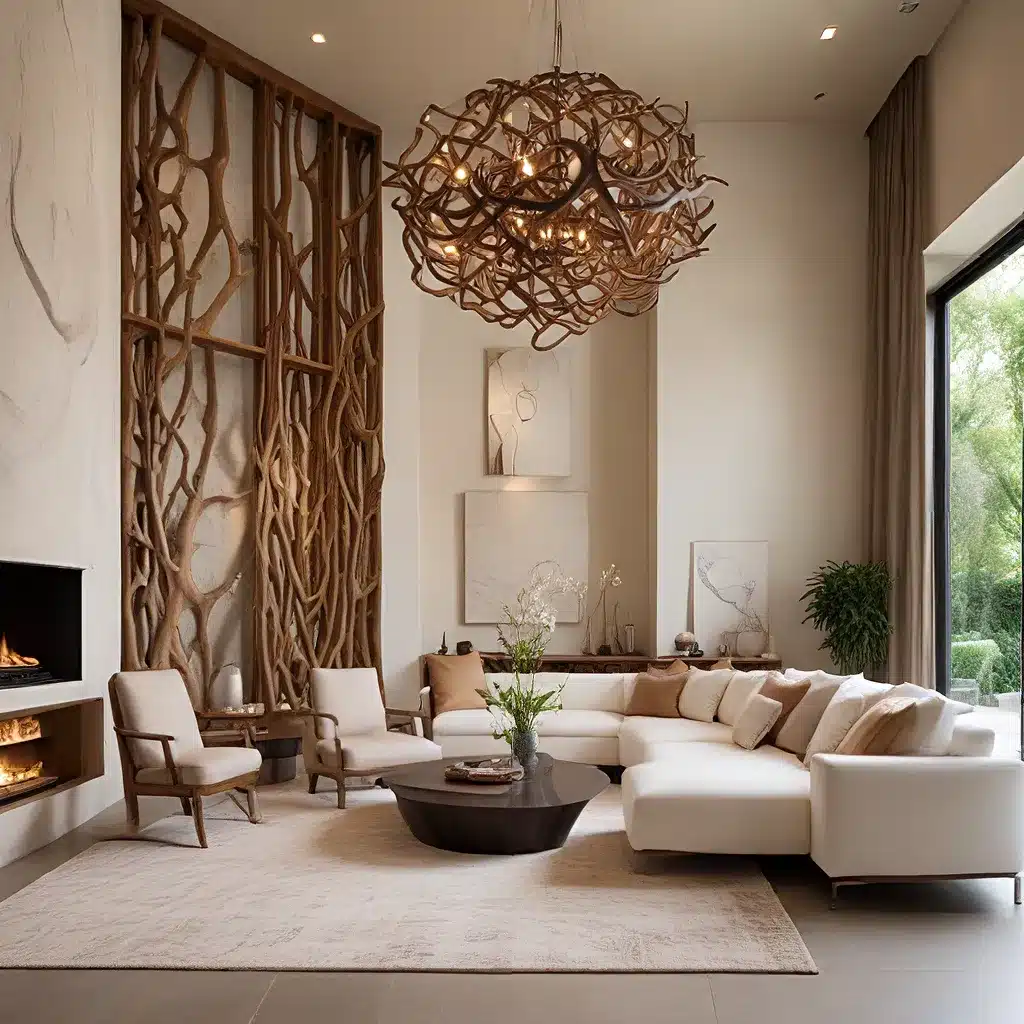
In the ever-evolving world of interior design, a new trend is captivating homeowners and design enthusiasts alike: the rise of sculptural and artistic living spaces. These captivating environments go beyond mere functionality, blending form and function to create true sanctuaries of aesthetic delight.
Embracing the Art of Interior Design
Interior design is no longer just about coordinating colors and selecting furniture. It has evolved into an artistic discipline, where designers push the boundaries of traditional thinking to craft spaces that inspire, soothe, and captivate the senses. By incorporating sculptural elements, homeowners can transform their living spaces into personalized oases that reflect their unique personalities and lifestyles.
Redefining Spatial Dynamics
At the heart of this sculptural design movement is a focus on redefining spatial dynamics. Designers are no longer content with simply arranging furniture; they are actively shaping the very geometry and flow of a room. Curved walls, undulating ceilings, and unexpected architectural features create a sense of fluidity and movement, inviting the eye to explore and discover.
By embracing these spatial dynamics, designers can craft living spaces that evoke a sense of wonder and exploration. Sculptural elements, such as sinuous staircases, floating fireplaces, and dramatic light fixtures, become the focal points that anchor the room’s design, drawing the eye and captivating the senses.
Personalized Expressions of Art
Beyond the spatial dynamics, sculptural interior design also allows homeowners to infuse their living spaces with personal artistic expressions. Customized furniture, bespoke light fixtures, and one-of-a-kind artwork become the canvas upon which the designer and homeowner collaborate to create a truly unique and captivating environment.
Sculptural accents, such as organic-inspired vases, kinetic sculptures, and abstract wall hangings, can elevate the aesthetic appeal of a room and inject a sense of personality and individuality. These artistic touches can be showcased as the centerpiece of a space or seamlessly integrated into the overall design scheme, creating a harmonious and visually stunning result.
The Sculptural Sanctuary: Crafting Captivating Interiors
Designing a sculptural sanctuary that captivates and inspires requires a holistic approach that considers both form and function. By blending architectural elements, furniture, and decor, designers can craft living spaces that are not just beautiful, but also highly functional and tailored to the homeowner’s needs and preferences.
Balancing Form and Function
One of the key challenges in sculptural interior design is striking the right balance between form and function. Homeowners want their living spaces to be both aesthetically pleasing and practical, catering to their daily routines and lifestyle requirements.
Designers must carefully consider the flow of a room, ensuring that sculptural elements do not impede movement or disrupt the overall functionality. By incorporating modular furniture, flexible layouts, and strategic storage solutions, they can create spaces that are both visually captivating and highly livable.
Embracing Sustainable Design
As the demand for sustainable and eco-friendly living spaces continues to grow, sculptural interior design is increasingly incorporating environmentally conscious elements. This includes the use of renewable, natural materials, such as wood, stone, and organic textiles, as well as the integration of energy-efficient lighting and smart home technologies.
By embracing sustainable design principles, homeowners can enjoy the best of both worlds: a visually striking, sculptural sanctuary that also aligns with their values and environmental stewardship goals.
Collaborating with Professional Designers
Crafting a captivating and artistic living space often requires the expertise of a professional interior designer. These design professionals possess the specialized knowledge and creative vision to translate a homeowner’s aspirations into a reality, seamlessly blending form, function, and personal expression.
Through a collaborative process, designers can guide homeowners in selecting the right materials, finishes, and sculptural elements to create a living space that is both visually stunning and highly functional. By working with a designer, homeowners can access a wealth of industry connections, resources, and personalized service to ensure their sculptural sanctuary truly reflects their unique vision.
Embracing the Sculptural Lifestyle
As the demand for artistic and captivating living spaces continues to grow, the concept of the sculptural sanctuary is poised to become a defining trend in the world of interior design. By blending form, function, and personal expression, homeowners can create living environments that not only delight the senses but also enrich their everyday lives.
Whether it’s a dramatic architectural feature, a customized piece of furniture, or a sculptural accent piece, these elements have the power to transform a space, elevating it from a mere functional shelter to a true artistic sanctuary that reflects the homeowner’s values, personality, and lifestyle.
By embracing the sculptural lifestyle, homeowners can unlock a world of design possibilities, where their living spaces become a canvas for their unique artistic expressions. As they collaborate with professional designers to bring their vision to life, they can create captivating environments that not only inspire but also serve as a reflection of their own artistic and personal** journeys.

